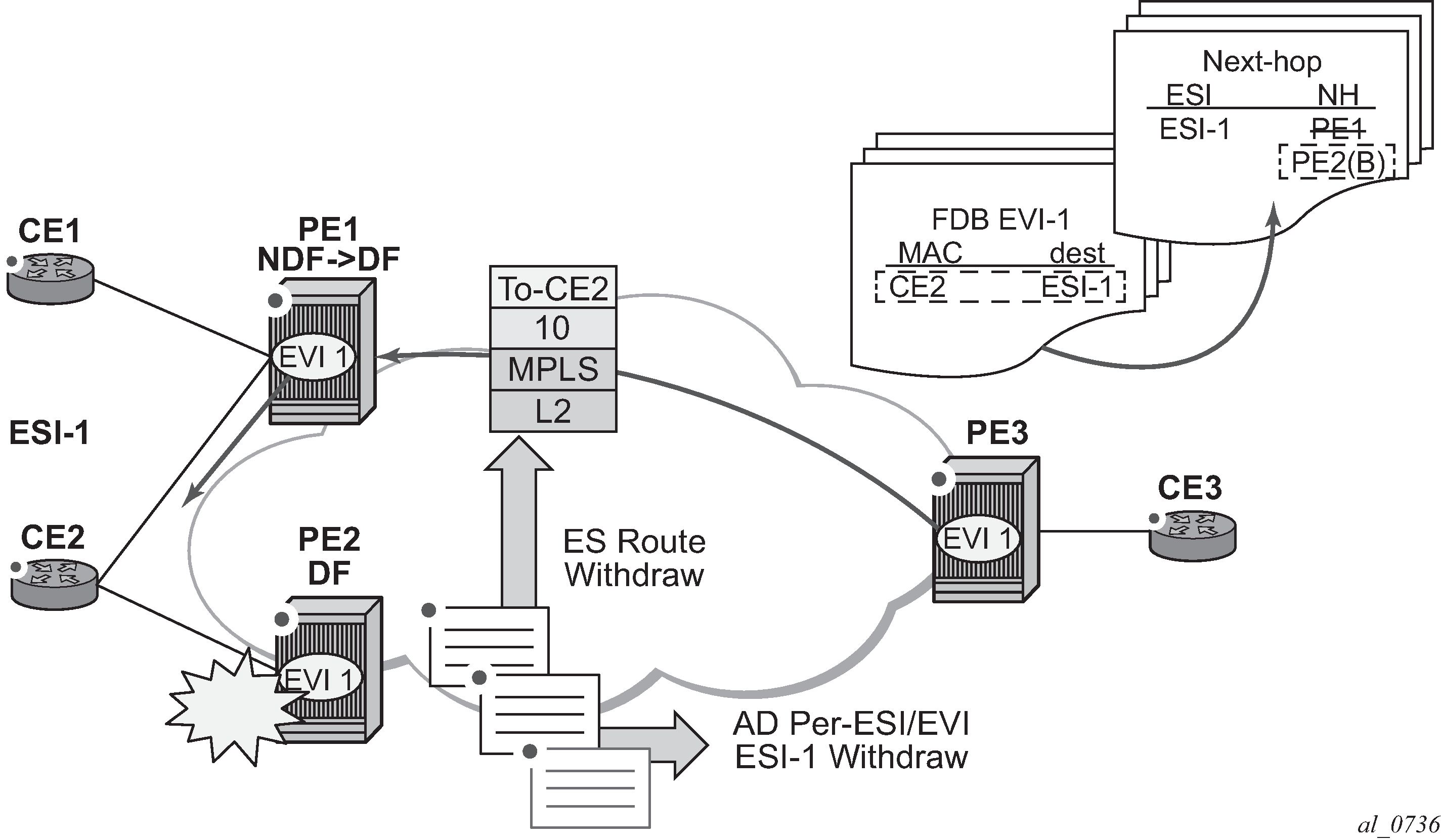Figure: Single-active multihoming ES failure shows the remote PE (PE3) behavior when there is an Ethernet-Segment failure.

The PE3 behavior for unicast traffic is as follows:
PE3 forwards MAC DA = CE2 to PE2 when the MAC advertisement route came from PE2 and the set of Ethernet AD per-ES routes and Ethernet AD per-EVI routes from PE1 and PE2 are active at PE3.
If there was a failure between CE2 and PE2, PE2 would withdraw its set of Ethernet AD and ES routes, then PE3 would immediately forward the traffic destined for CE2 to PE1 only (the backup PE). PE3 does not need to wait for the withdrawal of the individual MAC.
If after step 2, PE2 withdraws its MAC advertisement route, PE3 treats traffic to MAC DA = CE2 as unknown unicast, unless the MAC has been previously advertised by PE1.
Also, a DF election on PE1 is triggered. In general, a DF election is triggered by the same events as for all-active multihoming. In this case, the DF forwards traffic to CE2 when the esi-activation-timer expiration occurs (the timer kicks in when there is a transition from non-DF to DF).